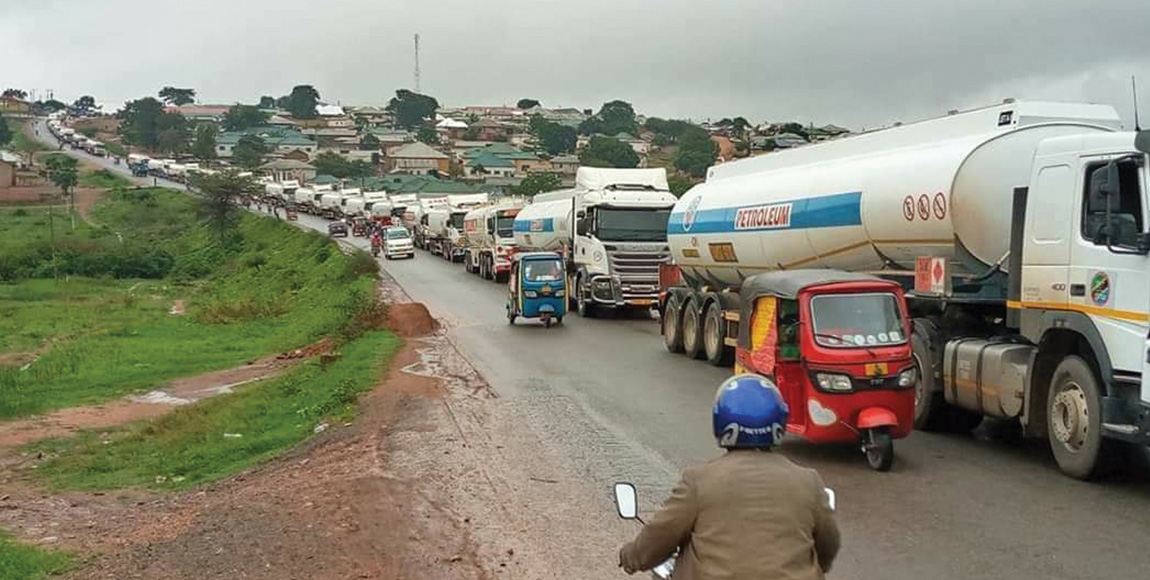Crashed interstate trade

The reports from Fesarta members of the current situation on the main road corridors of the region make a mockery of the fanfare and verbiage surrounding the golden future of interstate trade that will be facilitated by the ceremonial signing of the African Continental Free Trade Area (AfCTFA) Agreement
As a result of the inefficiencies of the border systems, bureaucratic indifferences between Zambia and Democratic Republic of Congo (DRC) and the total incompetence of the officials at the border posts, there is currently a 72-km queue of more than 1 200 vehicles from the Kasumbalesa border back to the town of Chambishi in Zambia. The queue includes more than 700 loaded fuel tankers.
This means that roughly 2 000 people (bearing in mind that Tanzanian operators have a driver and conductor on board each truck) are living on the roadside for weeks without food, water or sanitation and in very real danger, as cooking is done on open fires at the roadside.
This is a recipe for disaster; there is potential for a repeat of the Kasumbalesa fire that burned out 43 trucks and caused an unknown number of fatalities last year.
On the road tempers are rising, with reports of drivers fighting each other over queue jumping and constant harassment by thieves (which include police and army officials in the DRC).
The official responses are unsupportive and aggressive and are adding to the misery. At all Zambian borders, customs have stopped issuing T1 Transit documents for the DRC with the result that the borders at Chirundu, Kazungula, Vic Falls and Nakonde have growing queues and all available truck parks are full.
At Chirundu the congestion is chaotic with Zimbabwean Customs officials telling drivers to uncouple their tankers and drive the truck tractors away to make space, with wheel clamping and a US$ 100 (R1 400) fine when they refuse to comply.
The Chingola town council has banned trucks from parking in the town, thereby leaving a five-kilometre gap in the queue, which means northbound truckers have no means of knowing when the queue moves.
Zambia allows three days for transit vehicles to enter and leave the country before imposing penalties, but this is patently impossible and is another source of conflict for truckers.
The operating hours at Kasumbalesa border post are 06:00 to 18:00. However the staff live 100 km away in Lubumbashi and travel to work every day. They generally arrive late, which limits the time for the clearance of vehicles. The queue therefore moves only two kilometres per day – some vehicles could take a month to cross the border!
To date there has been no joint attempt by the Zambian or DRC revenue and customs authorities to extend operating hours to 24 hours a day to clear the backlog.
The situation is aggravated by the devastation caused by Cyclone Idai in Beira, Mozambique, which destroyed fuel, road and bridge infrastructure, including the Harare oil pipeline. This means that all oil fuel for Zambia and the DRC is coming by road from
Dar es Salaam, Tanzania (1 750 km away), and all these tankers are now jammed in the queue.
South Africa has embargoed fuel exports to support Eskom’s need for generator capacity and the South African Revenue Service (SARS) does not permit fuel transit from Maputo, due to concerns about potential unloading in South Africa.
The current work stoppage at the Kazangula bridge by Daewoo Corporation, due to non-payment by the Zambian Government, is another obstacle to corridor efficiency.
It is estimated that the cost of this monumental fiasco is approximately US$ 1,5 million per day (R700 million per month) in truck standing time and possibly twice that figure in loss of business and industrial disruption.
This disastrous situation does not appear to be of any interest to the region’s economic communities as there has been no useful response to resolve the issues from the Southern African Development Community (SADC), the Common Market for Eastern and Southern Africa (COMESA) or the East African Community (EAC). The country authorities appear to be incapable of concerted action.
As executive director of Fesarta I have again made an appeal to the transport industry to get serious about supporting and strengthening the region advocacy potential of the association. Experience in other regions of the world shows that this is a crucial necessity to provide a counter to the official indifference to the impacts of logistical inefficiency on the economies of the region.
The magnitude of the current wastage and losses is a measure of what could be achieved by support from the industry and the various donor groups that are currently wasting their money supporting government agencies.
Published by
Mike Fitzmaurice
focusmagsa




